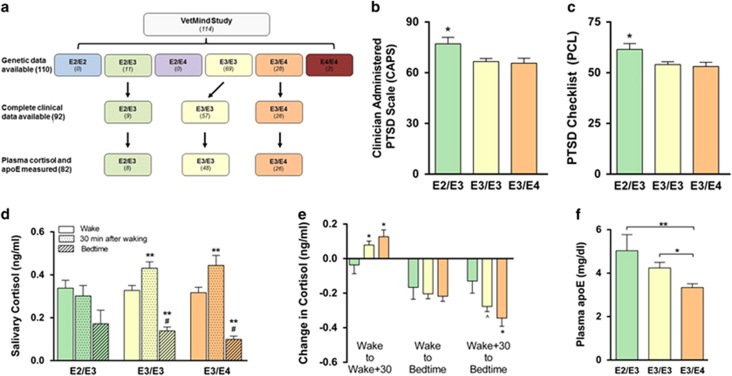Figure 5.
Symptom severity and salivary cortisol levels in veterans with posttraumatic stress disorder (PTSD). (a) VetMind participant flow chart. Participants in the VetMind clinical trial were genotyped for APOE, and PTSD symptomatology, salivary cortisol, and plasma apolipoprotein E (apoE) levels were analyzed. (b and c) In a group of veterans diagnosed with PTSD, individuals with E2/E3 genotype had higher PTSD Checklist (PCL) and Clinician-Administered PTSD Scale (CAPS) scores compared with those with E3/E3 or E3/E4 genotype. (d) E2/E3 individuals did not show an increase in cortisol 30 min after waking as did E3/E3 and E3/E4 individuals, suggesting a potential flattening of the normal diurnal fluctuation in salivary cortisol concentrations. (e) Mean changes in cortisol concentrations across the day. (f) Plasma apoE concentrations in (non-fasted) veterans with PTSD. (b and c) *P<0.05, analysis of variance (ANOVA) followed by t-test. (d) *P<0.05, waking vs 30 min after waking; #p<0.05, 30 min after waking vs bedtime, t-test. (e and f) *p<0.05, **p<0.01, ^p=0.058, ANOVA followed by t-test.

